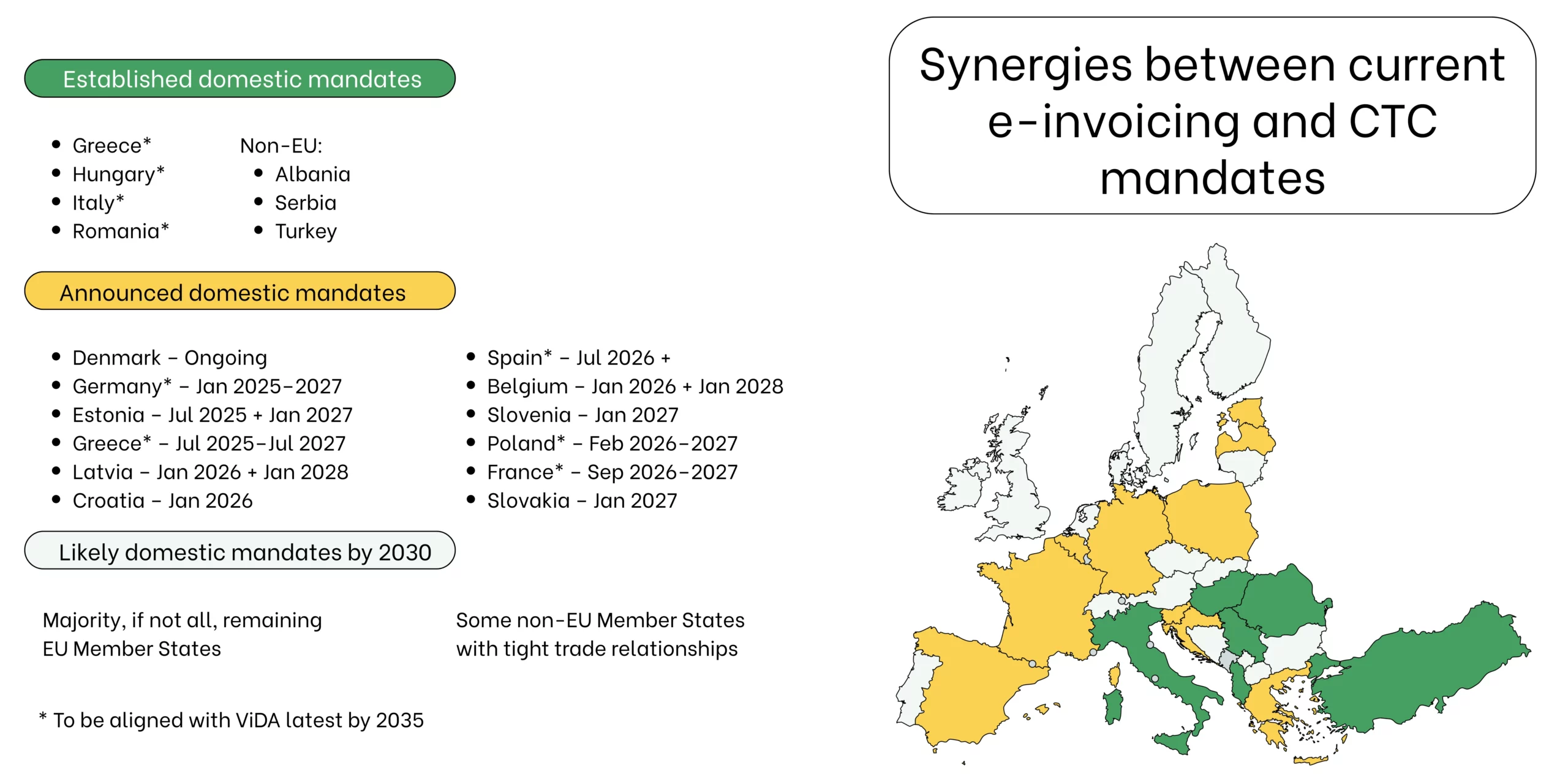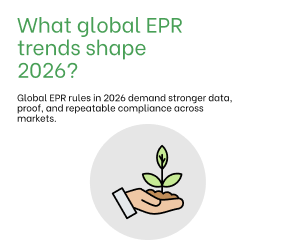What is e-invoicing and why does your business need it?
What is e-invoicing and why does your business need it?
Why is e-invoicing mandatory for compliance?
- E-invoicing streamlines the invoicing process, reducing paperwork and processing times.
- It minimizes costs associated with printing, postage, and manual data entry, leading to savings for businesses.
- Automation decreases the likelihood of human error, ensuring that invoices are processed correctly.
- E-invoicing allows for real-time tracking and access to invoices, facilitating better cash flow management.
- Governments and tax authorities can monitor transactions more effectively, reducing tax evasion and increasing compliance with tax laws.
- Reducing paper use aligns with corporate sustainability goals by promoting environmentally friendly practices.
Ready to simplify e-invoicing and scale with confidence? Request a fee quote and discover a personalized solution that adapts to your workflow, supports PEPPOL and national systems, and grows with your business.
How can an e-invoice help manage business remotely?
Electronic invoices (e-invoices) help you manage your business remotely by automating the invoicing and receiving processes. This simplifies operations, reduces costs, and promotes tax compliance, which is especially important for remote teams. Using e-invoicing enables efficient financial tracking and real-time document exchange, which increases transparency and simplifies the management of remote operations.
Comparison: e-invoicing vs. traditional invoicing
| Feature | E-Invoicing | Traditional Invoicing |
| Improved Cash Flow | ||
| Cost Savings | ||
| Environmental Benefits | ||
| Improved Supplier Relationships | ||
| Security | ||
| Automation | ||
| Better Transparency | ||
| Compliance |
How does e-invoicing work?
E-invoices are created in a structured format like XML or UBL and transmitted via secure networks such as PEPPOL. They often include digital signatures, automated validation, and direct ERP system integration to ensure compliance and speed.
Common e-invoice formats
- XML and UBL: Widely used formats that support structured data exchange.
- PDF with embedded XML: Often used for hybrid models.
- PEPPOL BIS Billing 3.0: Standardized format used in the PEPPOL network.
Types of e-invoicing
- B2B (Business-to-Business): Invoices exchanged between companies.
- B2G (Business-to-Government): Mandatory in many countries for public procurement.
- B2C (Business-to-Consumer): Growing in markets with digital consumer tax models.
Where is e-invoicing mandatory?

How to implement e-invoicing in your business
- Assess Your Current Needs and Challenges:
- Analyze your existing invoicing process: Identify bottlenecks, delays, and areas for improvement.
- Determine your key objectives: What are you hoping to achieve with e-invoicing? (e.g., faster payments, reduced costs, improved efficiency, better cash flow).
- Evaluate your current technology: Determine if your existing accounting software, ERP system, or other business tools are compatible with e-invoicing solutions.
- Choose the Right E-Invoicing Solution:
- Research and compare different options based on features, pricing, compliance, security, and ease of use.
- Plan and Prepare for Implementation:
- Develop a comprehensive implementation plan with timelines and responsibilities.
- Train your team on the new system.
- Prepare your data for seamless integration.
- Test the system thoroughly before full implementation.
- Go Live and Monitor:
- Gradually transition to e-invoicing by starting with a limited number of invoices.
- Monitor key performance indicators (KPIs) and gather feedback.
- Maintain and Optimize:
- Regularly update the system with the latest features and security patches.
- Stay informed about regulatory changes.
- Continuously improve your e-invoicing workflows to maximize efficiency and minimize errors.



